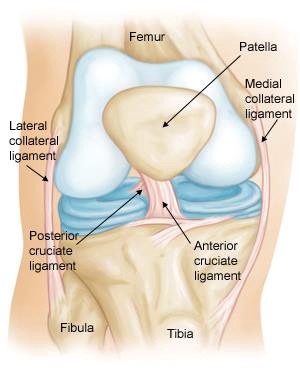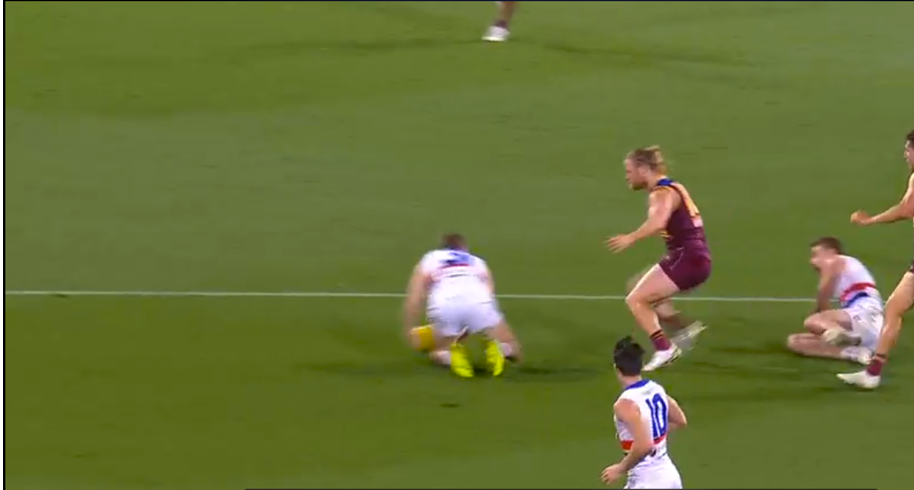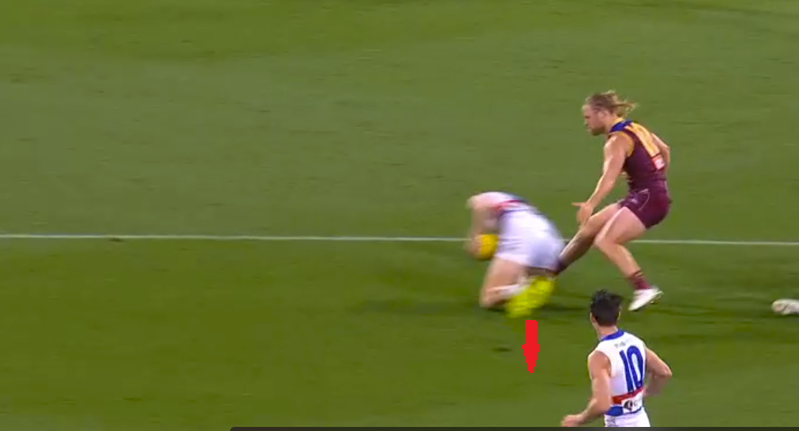A Play-by-Play Analysis

Despite the shortcomings of the Western Bulldogs in the 2021 AFL Grand Finals, Marcus Bontempelli was counting his lucky stars even to be playing. After landing awkwardly in the semi-finals against Brisbane, there was some serious doubt about his finals eligibility. Given how he hurt his knee, our physios were concerned that he had sustained a PCL injury. If so, this would have almost definitely terminated his chances at a final’s berth. Fortunately, this was not the case. Given the uncommon coverage of PCL injuries, we thought we’d cover this topic in our current newsletter.
Suppose you’re a regular footy spectator, coach or simply just interested. In that case, this article will guide you about your PCL injuries and what to do if you do see one. At the bottom of the article will be our physio’s play-by-play analysis of Bontempelli’s accident.
All About the PCL
As the name would suggest, this ligament is closely located near the ACL. The PCL is found inside the knee, which runs from the front roof to the rear ceiling of the joint. In contrast, the ACL runs in the opposite direction. Due to its positioning, its leading role is to provide stability to the knee to prevent over-rotation and overstretching [2].
What is a PCL Injury?
Unlike the more infamous sibling ligament, the anterior cruciate ligament or ACL, the posterior cruciate ligament (PCL) is less discussed. One reason is that PCL knee injuries are far less common. Compared to ACL tears, PCL knee injuries are more than 30 times more likely to happen [1]. Additionally, isolated PCL tears are less likely to occur but coincide with other types of injuries (e.g. ligament sprains, meniscus injuries, etc.).
How Do PCL Injuries Occur?
PCL injuries are rare in the general population. Still, they are more commonplace in contact sports, such as AFL and traumatic accidents, such as car crashes. Some common PCL injury mechanisms or causes include:
- Direct blow to the knee (e.g. falling onto a bent, banging the knee against the dashboard in a car accident, etc.)
- Hyperextension of the knee
- Non-contact bent knee injuries
Play-by-Play Analysis of Bontempelli’s PCL Injury Scare
Below will be a brief play-by-play analysis of what our physios saw during Bontempelli’s injury scare. Footy families, fans, medicos or even trainers may find this valuable analysis for the early detection of future PCL injuries.
Video footage of Bontempell’s potential knee injury can be found by clicking here.
Part I: The Contest Before the Injury (00:10)
Around the 00:09–00:10 mark, we see Bontempelli take a contested drive to the footy. Please focus on the right knee as it begins to plant onto the ground. From this screenshot alone, there isn’t anything too outstanding.

Part II: Blow to the Knee (00:10)
At the 00:10 mark, we see Bontempelli land heavily on his right knee as he secures the ball in his hands. As indicated by the red arrow, he dealt a direct blow to his bent knee in his contest with Brisbane’s Dan Rich. Lots of force onto the knee in this position can over-stretch the PCL (especially onto his own bodyweight).

Part III: The Aftermath (00:23)
After clearly being hurt, the physio and/or sports trainer enters the field to take Bontempelli away for assessment. He is visibly hobbling as he struggles to put all his weight onto his right knee.

Part IV: The Physio’s Assessment (00:32)
After being taken off, Bontempelli is immediately brought to the physio for a physical examination of the knee. As per standard practice, the physio performs various tests to determine A) a potential diagnosis and B) whether he is in the suitable condition to keep playing.
In this screenshot, the physio is performing a posterior drawer test which tests for any excessive movement of the knee. A positive test will lead to increased shifting of the knee (compared to the other side) and discomfort from the player. Judging by Bontempelli’s facial expressions, he obviously finds the test very irritable, which might’ve indicated a potential PCL injury.
It’s important to remember that these tests and observations are only indicators of injury rather than a definitive diagnosis. Further tests are likely required to confirm any structural damage in the knee.

Part V: Cleared to Play
As per standard practice, Bontempelli underwent further imaging investigations after the incident. According to this article, he did not have ‘serious structural damage’. Still, he had likely symptoms, such as ‘swelling and [probably] fluid build up in the knee.’ Bontempelli was lucky to have escaped significant injury despite how grim the incident had looked. He was cleared to play in the preliminary and eventual grand finals with proper medical attention and care.
What Should You Do if you Suspect a Knee or PCL Injury?
The severity of any knee injury can be challenging to determine straight after an injury. Symptoms, such as pain around the knee joint, swelling, and instability, could indicate a PCL injury (although not exclusive to). If a knee or PCL injury has been suspected, our physios have recommended the following:
Rest, Ice, Compression, Elevate (RICE)
Especially when the knee is sore and swollen, using the traditional RICE principles can help ease symptoms for the first few days. Specifically, RICE stands for:
- Rest — Limiting any vigorous physical activity or movements (e.g. jogging, hopping, etc.)
- Ice — Applying ice around the knee joint for approximately 3–4 sessions of 20 minutes daily.
- Compression — Wearing a compression stocking or bandage, such as a piece of Tubigrip, can assist with bringing down the swelling.
- Elevate — Keep your knee elevated whilst sitting or lying to reduce swelling.
Getting An Assessment from a Physiotherapist
Seeing a physiotherapist will help determine whether any significant knee injury has occurred. A series of relevant questions and a physical examination will be performed. Depending on the findings, further tests such as MRIs or x-rays may be referred. Early detection of any knee injury is crucial for receiving the necessary treatment and returning to sports quicker.
Early Rehabilitation
Early rehabilitation is encouraged for most PCL injuries. Preventing the muscles from deconditioning and the joint from stiffening are just two possibilities that can delay recovery. With the approval of a qualified health professional, simple exercises, such as bending and straightening the knee, can be commenced shortly after the injury.
Recovering from knee injuries can be a long and challenging journey. However, you can prioritise achieving a winning outcome through a thorough rehabilitation program. As one of the oldest physiotherapy clinics in Victoria, we have successfully treated thousands of clients with knee injuries.
Whether you’re looking for a face-to-face or online appointment, our dedicated therapists at Hawthorn Physiotherapy will help find a solution for you.
Start your knee rehab today by making a booking here.
References
- Majewski, M., Susanne, H., & Klaus, S. (2006). Epidemiology of athletic knee injuries: A 10-year study. The knee, 13(3), 184–188.
- Logterman, S. L., Wydra, F. B., & Frank, R. M. (2018). Posterior Cruciate Ligament: Anatomy and Biomechanics. Current reviews in musculoskeletal medicine, 11(3), 510–514.
